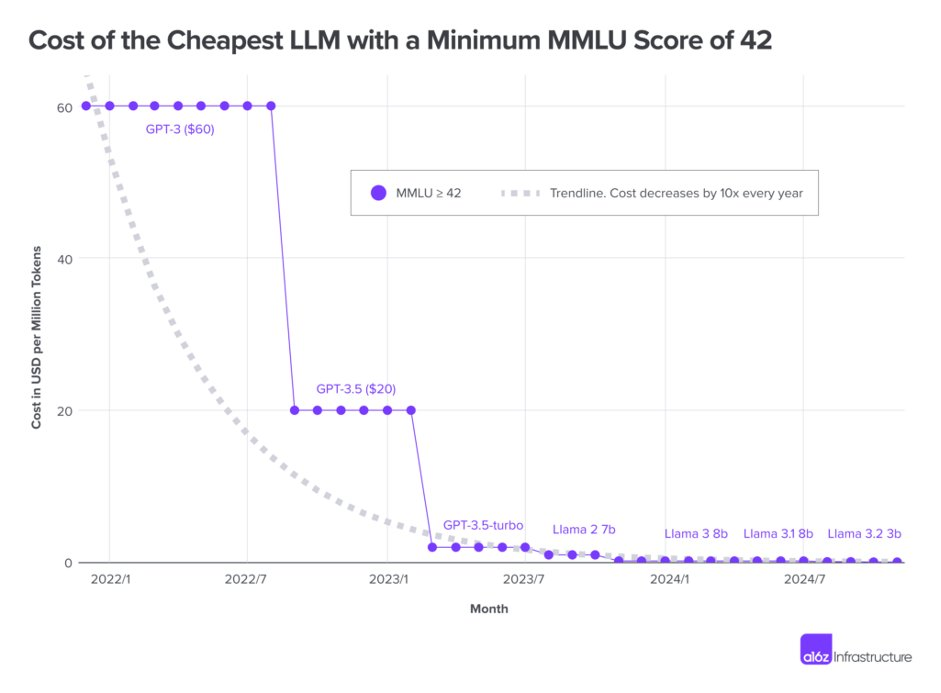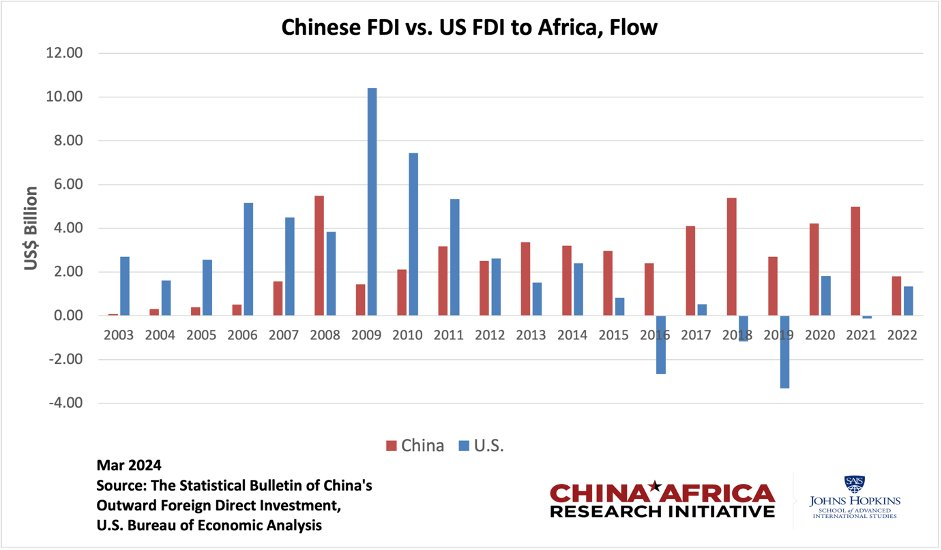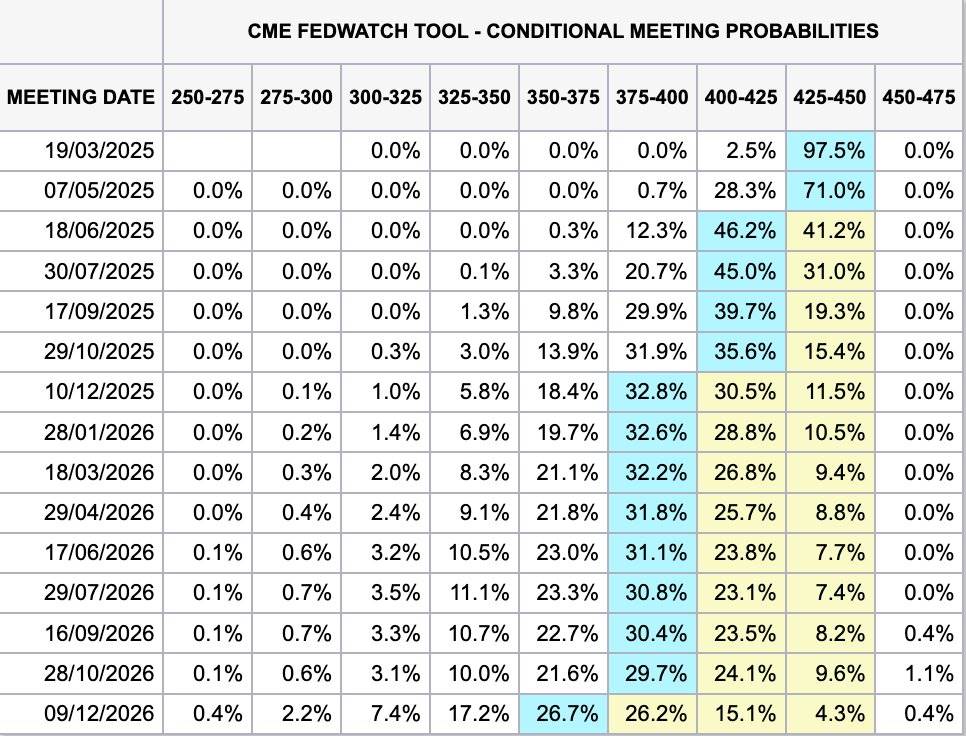"American Exceptionalism" trade may be coming to an end.
Author: Flip Research
Translated by: Deep Tide TechFlow
The Comprehensive Retreat of American Exceptionalism
Warren Buffett often mentions the concept of "tailwinds for America" in his annual letter, referring to the long-term advantages of the U.S. economy on a global scale. His perspective has consistently proven correct, helping him achieve astonishing returns over multiple generations, making him one of the greatest investors in history.
However, I believe this trend is rapidly changing. By the end of 2024, I hold only a small amount of U.S. stocks and cryptocurrencies. In this article, I will elaborate on the logic supporting this trade and explain why I believe we may see a decline in the U.S. Dollar Index (DXY) and continued underperformance of U.S. stocks (and by extension, cryptocurrencies).

The Rise of AI: Global Competition and Value Transfer
In recent years, the rise of AI has undoubtedly been one of the most significant trends. AI is rapidly changing the way we live, and the pace of this transformation is accelerating. This trend is driven by multiple factors:
Computing power is growing exponentially according to Moore's Law, with the powerful parallel computing capabilities of GPUs further empowering this growth, and NVIDIA has consistently been at the forefront of this field.
Breakthroughs in science and technology, such as the advent of the Transformer architecture, have laid the foundation for performance improvements in AI models.
Massive investments from governments and private enterprises. For instance, the world's seven major tech companies (often referred to as "Mag 7") are expected to invest over $300 billion in AI by 2025.
The combined effect of these factors has significantly reduced the inference costs of AI models (i.e., the costs of using AI models). According to estimates from A16z, this cost has decreased by a factor of 1,000 over the past three years.
Particularly, the release of DeepSeek r1 has accelerated this trend. Many refer to it as AI's "Sputnik moment," akin to the technological race triggered by the Soviet Union's launch of the first artificial satellite in 1957. The difference this time is that the competition focuses on building the most powerful large language models (LLMs) globally. Currently, we can see that inference costs are rapidly declining, even approaching zero.
So, who will capture this value? In the short term, value will flow down the industry chain to the application layer, specifically to those businesses and enterprises built on LLMs. However, in the long term, as LLM performance continues to improve, competition among application layers will intensify, development will become more convenient, and plug-and-play solutions will become increasingly abundant. Ultimately, this value will be directly transferred to individual users.
I believe the next 2-3 years will be a critical period of transformation in the AI field, with impacts far exceeding most people's expectations. This is why I firmly believe that AI-based robotics will gradually demonstrate stronger competitiveness, as hardware interfaces have higher competitive barriers compared to software applications.
From an investment perspective, there is a clear misalignment in this field. Regardless of which country you are in, investment portfolios typically concentrate on the S&P 500 index (S&P). With the popularity of index funds, this trend has been further amplified—many ordinary households directly invest idle savings into S&P 500 ETFs (like VOO), and investment forums commonly advise "put all your money into the S&P 500 and don't look back." The traditional 60/40 stock/bond investment portfolio has almost become a thing of the past. As a result, the S&P 500 currently accounts for more than half of the global stock market's market value, with a total market capitalization of about $55 trillion. This concentration of investment may overlook the new opportunities brought about by the rise of AI.
Technological Change and Global Value Transfer
Although global financial capital is highly concentrated in the U.S. market, the most transformative technologies of our generation are redistributing value among the global population. This may be one of the most powerful "equalizers" we have seen—value is gradually being reallocated according to population distribution. So, what does this mean for the U.S.? While the U.S. holds over half of the world's financial capital, its population accounts for only 4.2% of the global total.
Of course, to convey the message more clearly, some of the above points have been simplified. For example, the Mag 7 companies (the seven tech giants) have already recognized these potential risks. Companies like Meta have taken action to reduce inference costs by building open-source models (like Llama) while also investing in robotics and application layers. However, these facts do not change the core logic of the overall argument.

The Trump Effect: Concerns Over America's Global Position
There is no doubt that Donald Trump is changing the landscape of global politics—the "Make America Great Again" (MAGA) movement marks a radical departure from traditional political discourse. However, despite Trump's claims that his policies will make America great again, I believe that his policies are significantly undermining America's influence on the global stage and may ultimately lead to a gradual decline in America's prospects.
To understand this, we first need to clarify why the dollar has become the global reserve currency. On the surface, this can be attributed to the strong driving force of the U.S. economy: the U.S. economy accounts for about 26% of global GDP and has a robust, open, and highly liquid capital market.
However, this does not fully explain the dollar's global dominance. If it were merely economic factors, we would expect to see the usage of other currencies correspond to their economic scale. The fact is that the dollar is involved in nearly 90% of global transactions. What truly supports the dollar is America's political and military power. Whenever a country appears too strong, the U.S. imposes sanctions and urges allies to take similar actions. For example, the recent policy banning the export of high-performance GPUs to China is a stark example. This pattern is not new—historically, the pound was the global reserve currency, relying on Britain's military power until the decline of the British Empire caused it to lose that status.
However, Trump is rapidly changing America's traditional positioning in politics and military affairs. His proposed "America First" philosophy emphasizes prioritizing domestic affairs while undermining the importance of traditional alliances and global military commitments:
General Tariff Threats: Trump has launched blanket tariff threats against all trade partners, including long-time allies. This has not only intensified anti-American sentiment (for example, in countries like Canada, there have been movements to boycott American products) but has also forced trade partners to turn to other countries and establish closer economic ties.
Isolationist Military Policy: Trump has pursued an isolationist military policy, weakening NATO's influence while demanding NATO member countries increase defense spending to 5% of GDP. This policy has prompted many European countries to compromise, beginning to increase defense budgets and reduce reliance on the U.S., undoubtedly weakening Trump's primary influence in Europe.
European Independence Trends: This trend is playing out in real-time. Today, the winner of the German elections, Friedrich Merz, has publicly stated that he will quickly promote European unity and "achieve independence from the U.S." This statement highlights the gradual weakening of Europe's dependence on the U.S. under Trump's policies.
Cuts to Foreign Aid: The Trump administration has significantly reduced U.S. foreign aid programs, which have long been an important tool for exerting American influence globally. Meanwhile, China has adopted a completely different strategy, especially in Africa, pursuing expansionist policies to secure valuable resources and key supply chains through initiatives like the Belt and Road.
Tilt Towards Russia: The Trump administration seems to focus on "ending the war in Ukraine at all costs," which has deepened U.S.-Russia relations—while Russia's GDP ranks only 11th globally. This policy choice not only alienates America's traditional allies but may also weaken its strategic position globally.

The Fed's Dilemma
Current U.S. political and fiscal policies have put the Federal Reserve in a difficult position. Many of the isolationist policies pursued by the Trump administration are not economically rational. The economics community has long proven that closed economic policies (Autarkic policy) are far inferior to global cooperation. For example, the law of comparative advantage clearly illustrates the benefits of international division of labor.
Although the overall performance of the U.S. market remains strong, some signs of weakness are beginning to emerge. The labor market is gradually cooling, and corporate investment is also decreasing. This is mainly because companies tend to reduce long-term investments in an uncertain policy environment. The GDP growth forecast for 2025 is 2.2%, which is considered moderate growth.
Meanwhile, inflationary pressures persist. The Consumer Price Index (CPI) rose 3% year-on-year in January, continuing to rise over the past six months. This rising inflation, coupled with slowing economic growth, forces the Fed to find a balance between the two. So far, the market generally predicts that the Fed may only cut interest rates once or twice this year.
Observing capital flows is always an important method for understanding the market. Last year's market rise was mainly driven by expectations of regulatory easing and increased liquidity. However, this year's market sentiment is entirely the opposite, more influenced by tightening policies. It is worth noting that the Fed's Quantitative Tightening (QT) plan will gradually ease in the first half of this year, injecting additional liquidity into the market.

Conclusion
The "American Exceptionalism" trade may be coming to an end, with complex underlying reasons. But as a saying goes: "The irrationality of the market can last longer than the investor's solvency."
So, why now? In my view, the Trump administration has been the catalyst for this change. He has altered the global political landscape in a way not seen in decades, forcing traditional allies to reassess their positions and causing significant damage to America's standing on the international stage.
The current situation is already very fragile, and it only takes a small spark to trigger massive change. For example, if the EU leadership simply says "no" to Trump's stance on Ukraine, it could prompt EU countries to unite; or allies might start forming new trade alliances in response to the uncertainty of U.S. policies. In fact, we have already seen signs of this trend in the policies of Germany's new leadership.
However, the economic situation in the U.S. does not provide much confidence. Meanwhile, the impact of the AI transformation is beginning to show. For instance, this year, the Chinese stock market has significantly outperformed the U.S. stock market, which may reflect the different developmental paths of the two countries in the technology sector.
As for cryptocurrencies, I believe institutional investors view them as high-risk assets on the risk spectrum and will adjust their capital flows according to the aforementioned trends. In the crypto space, institutional investors are often given a "halo," and many members of the crypto community (especially the crypto Twitter community, CT) have overly high expectations of their investment behavior. However, these institutions do not actually have any insider information (and may even know less than the CT community). Therefore, when the market experiences severe adjustments, their losses can be just as severe as those of ordinary investors. The question of whether MicroStrategy (MSTR) is involved in a Ponzi scheme is another topic worth exploring in depth.
Disclaimer: All the views expressed above are my personal opinions, reflecting my own portfolio positioning. The content has been highly condensed to cater to the reading habits of the crypto Twitter community (CT tends to focus on shorter points). Please always do your own research (DYOR) and draw conclusions based on your own judgment.
免责声明:本文章仅代表作者个人观点,不代表本平台的立场和观点。本文章仅供信息分享,不构成对任何人的任何投资建议。用户与作者之间的任何争议,与本平台无关。如网页中刊载的文章或图片涉及侵权,请提供相关的权利证明和身份证明发送邮件到support@aicoin.com,本平台相关工作人员将会进行核查。




